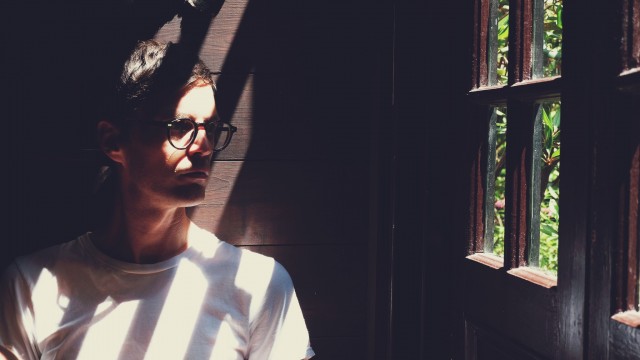
To call Veriditas, the new album by Helios, immersive would be an understatement. Helios represents one aspect of Keith Kenniff ‘s musical output: you might also know him from his more classically-oriented work as Goldmund, or his work in the pop group Mint Julep. Here, he channels a decidedly nocturnal mood, blending sonic spaces with field recordings to create something wholly unpredictable. I asked Kenniff about the album’s genesis, his literary inspirations, and the experience of recording outdoors.
The title of Veriditas comes from the writings of Hildegard von Bingen. Did her work as a composer have any influence on the music heard on this album as well?
I’ve listened to that music for a long time (since I was a teenager) and I think it’s always influenced my work. It’s amazing to listen to.
How did you settle on the arrangements for these compositions? What led to the decision to avoid percussion?
The arrangements are always somewhat haphazard, I do not plan a really specific roadmap out or score out anything, I record and compose simultaneously and wherever it goes, it goes. There wasn’t a conscious choice about not adding percussion or was it, I think, a really a huge stylistic leap from previous work per se (I’ve done several tracks on each album and an EP in 2010 of beat-less tracks, a handful of solo piano albums and also a lot of film score work which rarely has traditional “drums” in it) but I think I was just fascinated more with textures and rubato tempo than something concrete and fixed to a grid, which percussion tends to impose, so I just left it out.
You’ve recorded outdoors in both Oregon and Maine. Do you find that you work on thematically or emotionally different music depending on the space you’re in?
Both are wildly different places and I think it does affect the music, but not in a super-direct way. It’s something a bit more vague and it has more to do with life in general rather than a specific place.
Several of the compositions on Veriditas conclude ambiguously. What, for you, makes for the ideal ending for a piece of music?
My ideal structure of a piece is something with no beginning middle or an end. I’m striving more toward that and less toward “songs” with discernible builds, but something that also is not entirely experimental or emotionally vague. I like to listen to music that is challenging but listenable, and in regard to experimental or ambient music I really like something that just comes in and out and has no timeline or isn’t emotionally instructive, it just exists in a moment or can loop, and you get to choose how you feel. Something like Max Richter’s Sleep album that takes that idea and makes it exist in a really long timeframe is a great example, it’s listenable and mood-enhancing without being too overly instructive.
As someone with a number of musical projects, how far do you get into a particular idea before you know which project it’ll be right for?
I always start out with an idea with a particular project in mind. Goldmund pieces always start at the piano, Helios pieces always start out on synth or guitar and the Mint Julep material I work on with my wife always starts out with lyrics in mind. It helps to have some general guideline but I do leave it very open after that starts and I like to continue an idea always with the intention of finishing it.
Have you been reading anything notable lately?
John Adam’s book, Hallelujah Junction, is really amazing. I also want to re-read Stravinksy’s Poetics of Music in the form of Six Lessons.
Follow Vol. 1 Brooklyn on Twitter, Facebook, and sign up for our mailing list.
